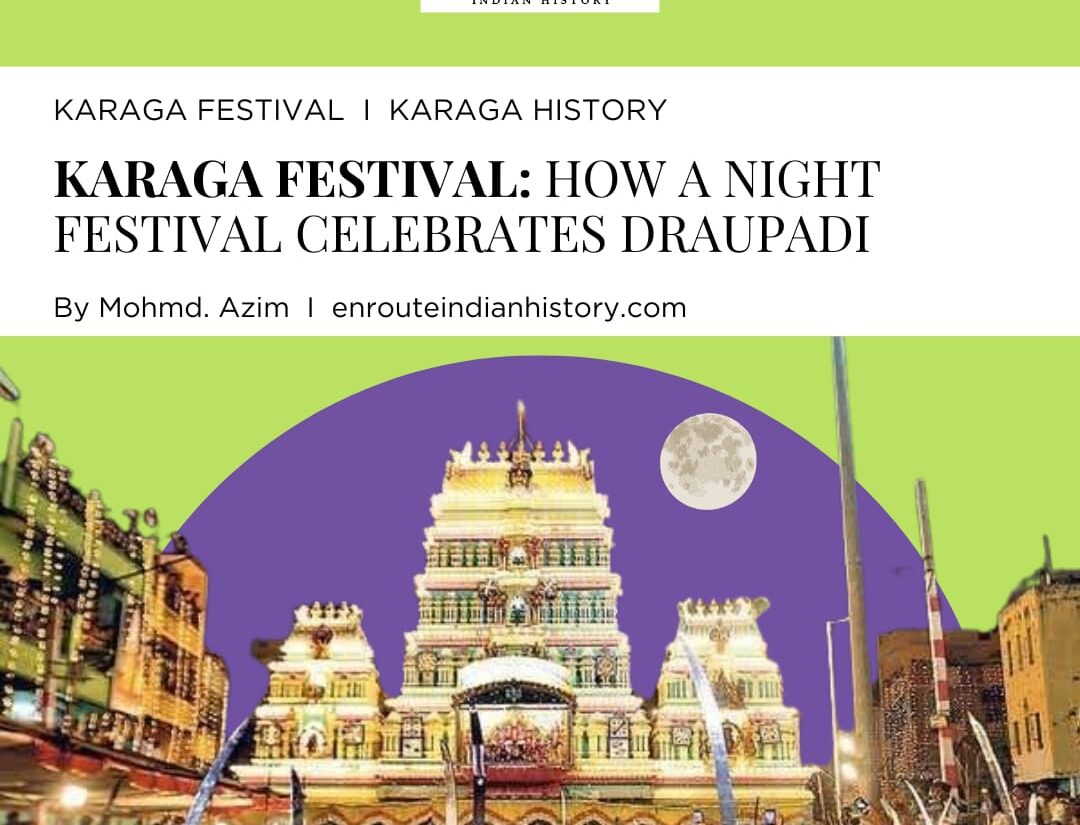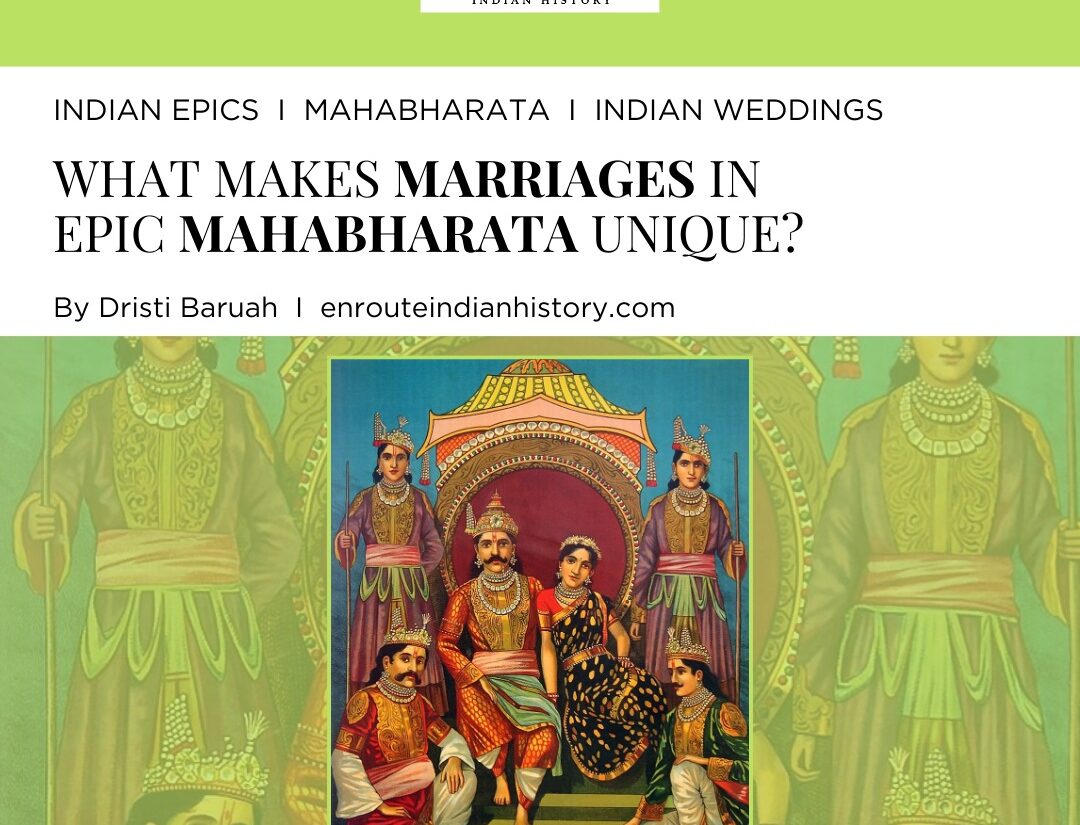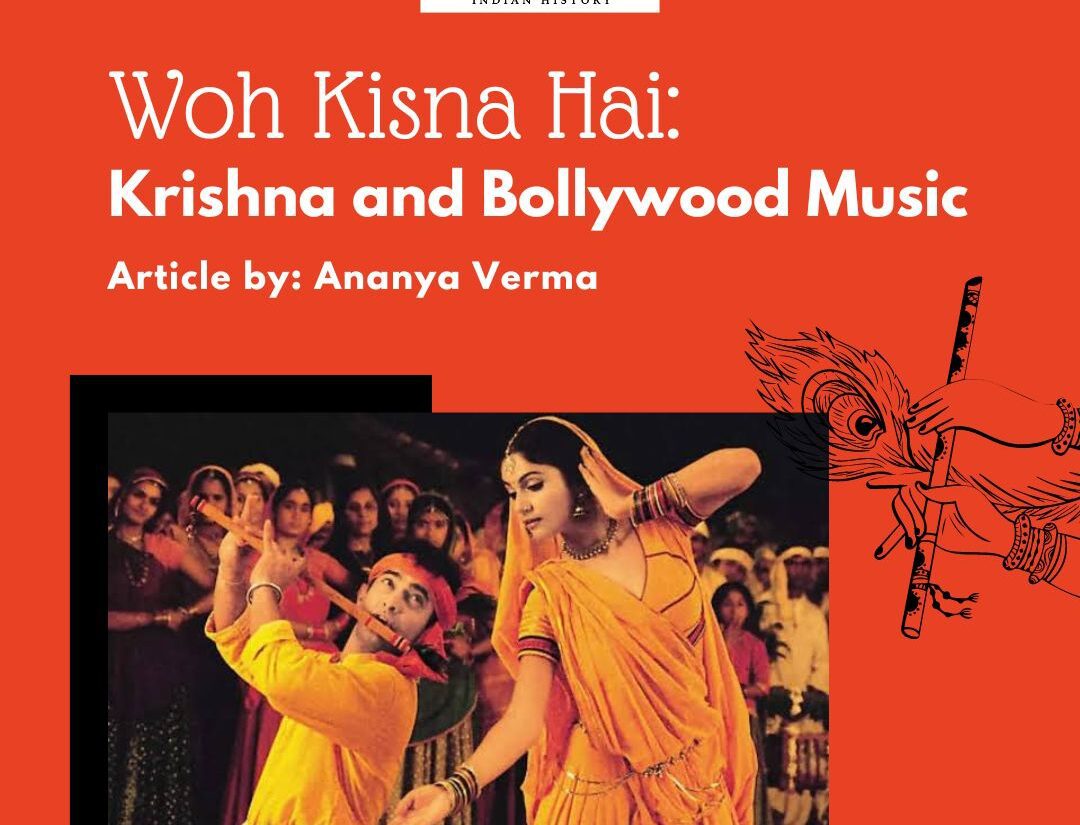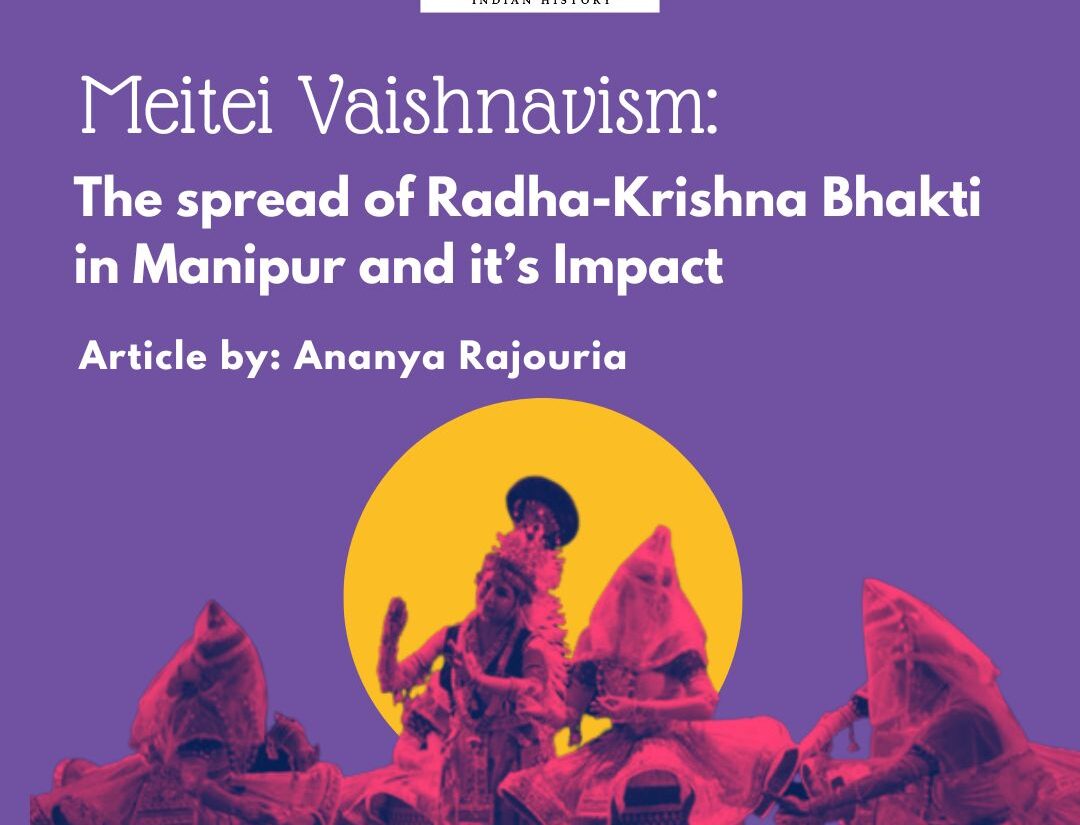Malla-yuddha to Wrestling: Tracing The Long History Of Wrestling In India.
- EIH User
- August 8, 2024
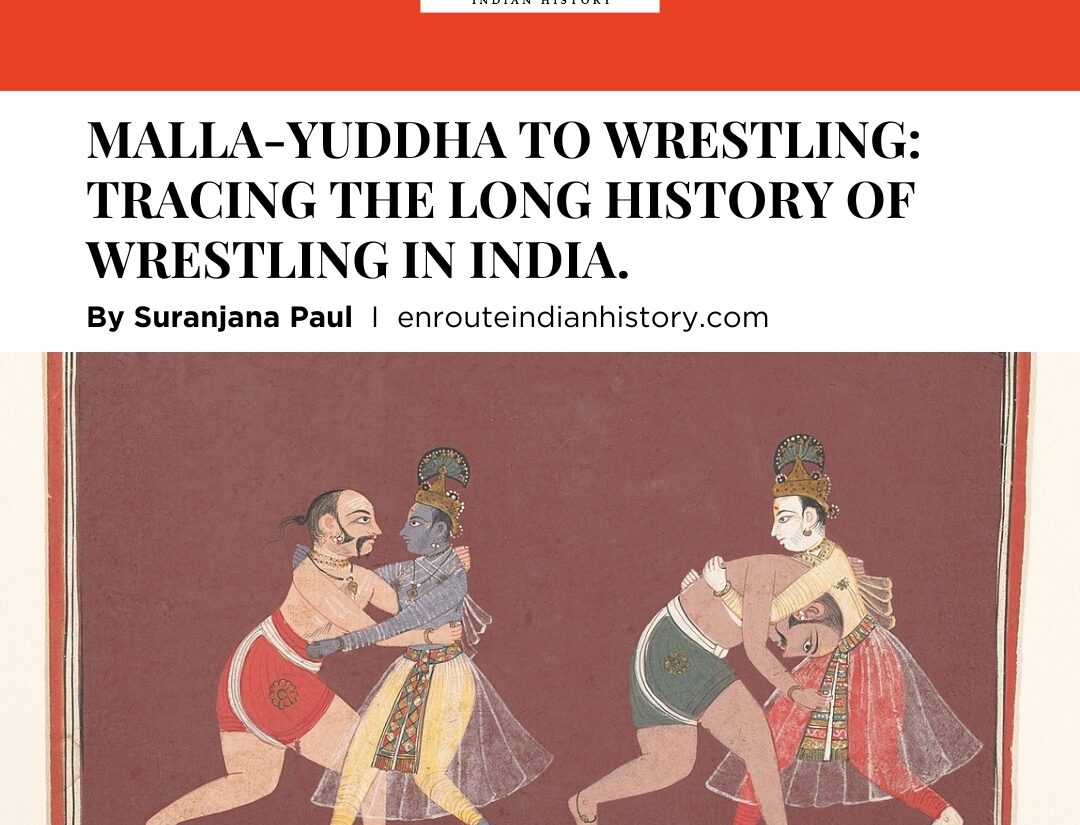
Wrestling
Wrestling hits the internet at different times for different reasons. From political controversy to Google’s doodling, or the Olympics to Bollywood, so many incidents that are related to Indian wrestling or wrestlers have remained on the internet. Google paid tribute to Hamida Banu by doodling a colourful picture of her on May 4, which was a historic day in her career in 1954.
In wrestling, India has bagged several medals in several Olympics, and it’s counted as the second-most successful sport after hockey in the Summer Olympics. Even Bollywood has produced many films on wrestling and wrestlers. So, it can be said that India has a deep connection with wrestling, and this connection is not new; it is deeply rooted in the ancient history of India.
Malla-yuddha Ancient Indian Epics:
The history of wrestling in India is linked with the two great epics of the Indian subcontinent, the Ramayana and the Mahabharata. This is one of the ancient sports in India. This is also referred to as the king of games in India. In ancient India wrestling was known as Malla-yuddha whereas the term ‘Malla’ stands for the wrestler and the word ‘Yuddha’ refers to battle or combat the final meaning is wrestling combat and those who practise this sport are known as ‘Mallas’. In Sanskrit, it is known as Malla-vidya, which means the knowledge of power.
In Ramayana, several characters are famous wrestlers such as Ravana, Kumbhakarna, Bali, Hanuman, Sugreev, and Jambavant. Also, in the epic, a match had taken place between Bali and Ravana. Still, in the present time, people associate the character Hanuman with the wrestling tradition. A mace, which is a weapon of Hanuman and carried by him, is the symbol of power, sprite and mastership and it is a traditional trophy which has been awarded to the wrestler who has won the match.
Malla-yuddha in Mahabharata has been mentioned in several places. The character Bhimsen, one of the Pandavas, is the most popular wrestler in the epic. Still, his strength is used as a proverb to express one’s strength. Bhim’s excellence and proficiency in wrestling are demonstrated in Adi Parva, Sabha Parva, and Virat Parva. Jarasandha, Hidimb, Kichaka, Bankasura, and Jatasura all were killed by Bhim in the wrestling fight. According to several Puranas Srikrishna and Balarama both were skilled wrestlers who fought against the court wrestlers of Kansa, the King of Mathura.
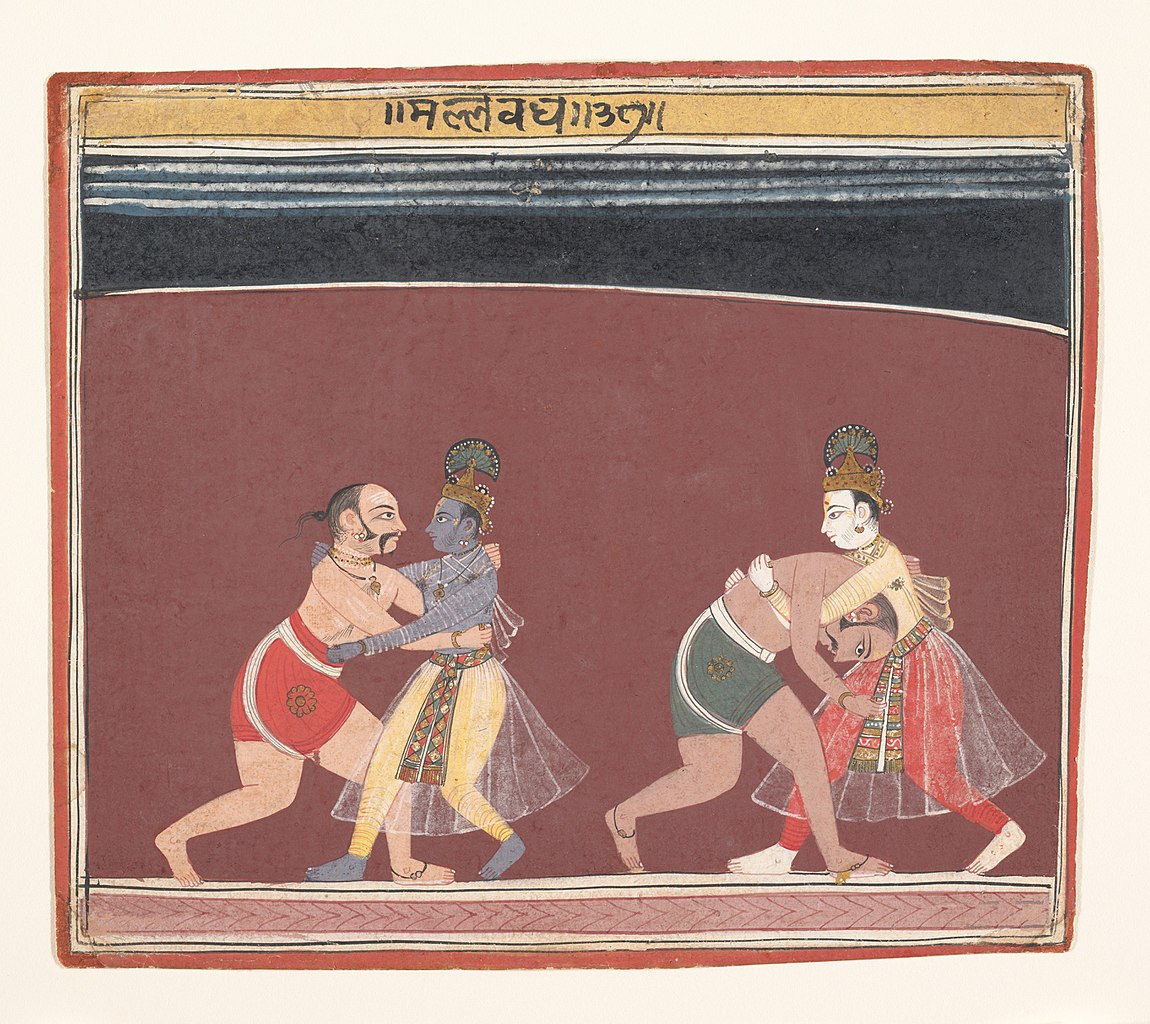
[Krishna and Balarama Fight the Evil King Kamsa’s Wrestlers: Page from a Dispersed Bhagavata Purana, 1650, The Met Museum – CC0]
(Source: The Heritage Lab)
Types of Malla-yuddha:
Four types of styles ruled the wrestling and determined the method, techniques and also acceptable in the combat and these styles are named after the characters of two ancient epics of India. Hanumanti style which is named after Hanuman, focuses on the wrestler’s technical superiority. Bhimaseni is named after the character Bhim, the second Pandava in Mahabharata where wrestlers stressed acquiring strength. Jambuvanti and Jarasandhi are both named after Mahabharta’s character where the wrestlers of Jambuvanti concentrated on utilising of lock and the hold of the opponent. Jarasandhi style is the most deadly style in all where wrestlers put effort to break the joints and the limbs. Significantly, the naming
of all styles are based on epics’ characters, and have social and religious value.
Wrestling in Ancient India:
Aside from the Hindu epics, and Puranas some other examples from different eras. During the Gupta era, wrestling was displayed in the terracotta art form which represented the popularity of wrestling at that time in the local artisans in the village area. Even, there are several paintings and sculptures in India in different times and places which prove the popularity of wrestling.
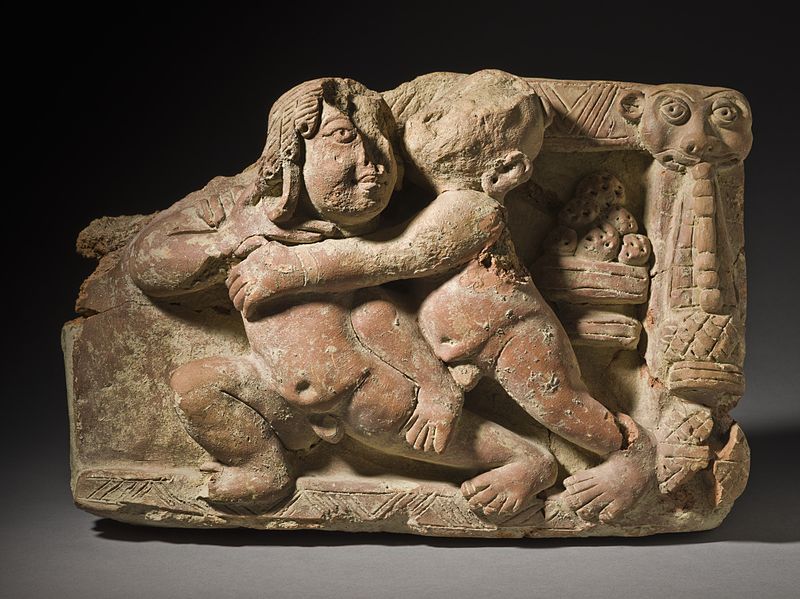
[Terracotta Sculpture: Indian Wrestlers]
(Source: Health & Fitness History)
There are also two different texts on wrestling in ancient India with detailed descriptions. Mallapurana is one of them which was written in the 13th century in the Gujarat region. This book contained detailed information about the diet, rules, training etc. According to Mallapurana, Malla yuddha is not only grappling with the opponent, but it is also a manner of life. Mānasollāsa which was written in Sanskrit and also referred to as the encyclopaedia
of Somesvara III who was a Calukyan King. The book gives details about the wrestling, wrestlers and the technique.
Wrestling in Mughal era:
Through conquering India, the Mughal Empire Babur introduced Iranian-Mongolian wrestling in India in the 16th century. Babur, who was a great wrestler, provided detailed information about Malla-yuddha in his book Baburnama. Even the modern form of Pehlwani was developed in the Mughal era by the influence of the Iranian- Mongolian wrestling style which had been incorporated into the regional Malla-yuddha. More specifically, it is a combination of Persian varzesh-e-bastani, the sport of heroes and the ancient Malla-yuddha. Physical training tradition was also present in Iran which can be dated back to the Parthian dynasty where the cause of the practice was to keep soldiers battle-ready. The purpose of Pehlwani was to enhance their strength and flexibility and increase their level of mindfulness. At this time wrestlers of the royal court received a monthly salary and they were also awarded by the emperor based on their performance. There is a story that once Humayun commanded the nobles of his royal court to combat with each other for his own entertainment and the princes and the emperor also participated in this unusual match where he also wrestled with Imam Quli.
The practice of wrestling in ancient India continued with Muslim rulers as well as Hindu rulers and even extended to Maratha realms. It was also said that Peshwa Balaji Baji Rao was a skilled wrestler.
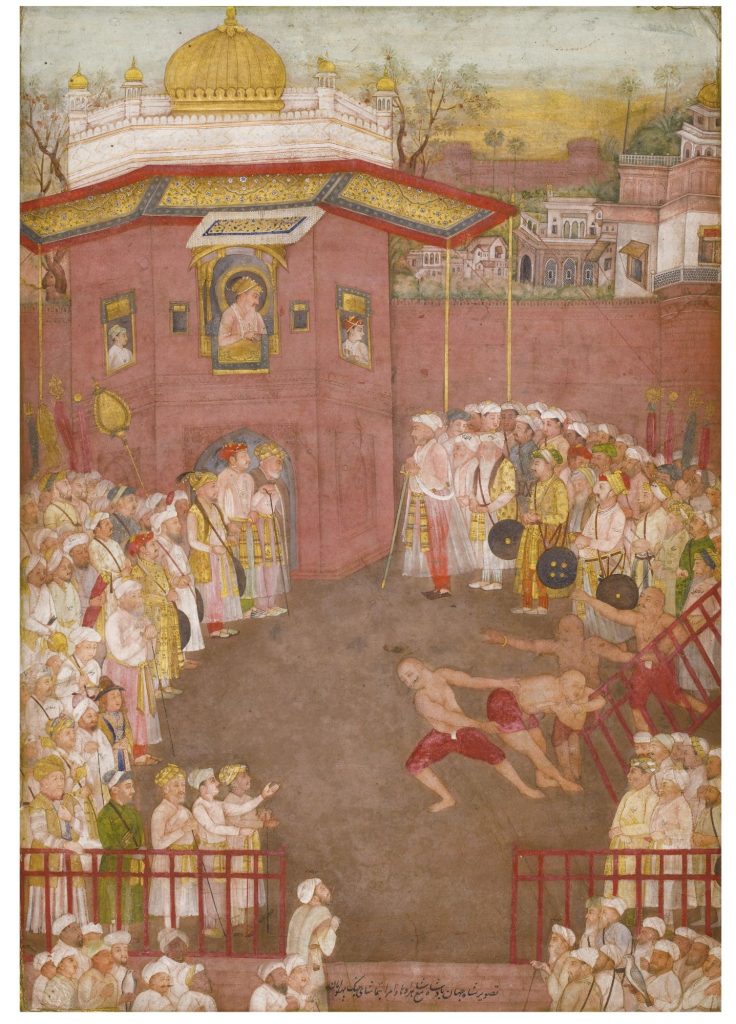
[The Emperor Shah Jahan watching a wrestling match, attributable to Mir Kalan Khan, Delhi or Lucknow, circa 1750 | Sothebys.]
(Source: The Heritage Lab)
Kusti in colonial era:
Traditional practices, like Malla-yuddha, witnessed a downfall due to the introduction of new sports and recreational activities by the colonial ruler. It was backed as a form of resistance and pride in the 20th century by slowly morphing into Kusti. At that time Maratha rulers accepted this sport wholeheartedly and later it got the support from other aristocrats. Especially in the 20th century, the wrestling contest was organised by Abdul Jabbar Saudage to unite and motivate youth against the British colonial era.

[Image taken from Tashrih al-aqvam, an account of origins and occupations of some of the sects, castes and tribes of India. Originally written at Hansi Cantonment, Hissar District, eighty-five miles north-west of Delhi, for Colonel James Skinner, 1825. British Library, CC0]
(Source: The Heritage Lab)
Malla-yuddha went through a long way to reach the present form of art. The wrestling heritage of India is still present in different forms and also taking part in several games worldwide. Even, though this manly sport is not restricted to men, women of India are also taking part in the game and winning medals for their country.
Reference
Venkat. R., 2021. India’s wrestling medals at the Olympics – From KD Jadhav to Sakshi Malik. Paris 2024 Olympics. 07 August 2021. Available from: https://olympics.com/en/news/india-wrestling-olympic-games-medals-kd-jadhav-sushil-kumar. [Accessed 3 August 2024]
Times of India. 2024.Meet Hamida Banu, India’s ‘first’ woman wrestler who competed with men and won. Times Entertainment. 04 May 2024. Available from: https://timesofindia.indiatimes.com/life-style/relationships/work/meet-hamida-banu-indias-first-woman-wrestler-who-competed-with-men-and-won/amp_articleshow/109836884.cms?utm_source=whatsapp&utm_medium=social&utm_campaign=AmpArticleshowicon. [Accessed 3 August 2024]
Parshad, J., 2021. Wrestling in Indian arts. Academic Discourse, 10(1), pp.44-50. Available from: https://d1wqtxts1xzle7.cloudfront.net/95367453/Wrestling_in_Indian_Arts-libre.pdf?1670385740=&response-content-disposition=inline%3B+filename%3DWrestling_in_Indian_Arts.pdf&Expires=1722839189&Signature=fkRdrPWCwN3j1oJCOS4kJAeyn8GTWFfh7nKkWpSZF6TxVEwWADNKRwug7cp4nsEYd2NvrZsjhScaPaXqm4PO-K8PCca-1Hm1WjFcMhbIa5NXdt~tc93i1kX02PlsOWKyaa5-tSPZtCxgBRFdEs2JG4ilJ6JyHC6bHLZ8Sm9L2I~iWozO–kngIjWaowMsbOXPpbb6SrETA5YVwTAJyxtsOqCVJdhg3CDE8hR2PZNFrsFsRTFtqfk9j7J~tt5Q-MY6kO5iNYp04L8jEdFpnCtxsRagjG3ICgER-m92mzMBAE69uy8PPuO3NajIKFK3VqEvDU7ouasmpe8D8gSJPvV9g__&Key-Pair-Id=APKAJLOHF5GGSLRBV4ZA. [Accessed 3 August 2024]
Black Belt. 2023. Mallayudha: India’s Ancient Wrestling Tradition and Its Evolution Through the Ages.
Black Belt.07 April 2023. Available from: https://www.blackbeltmag.com/mallayudha-india-s-ancient-wrestling-tradition-and-its-evolution-through-the-ages. [Accessed 3 August 2024]
Nandy. P., 2022. A quick peep into the history of Indian wrestling. Reflection. 22 January 2022. Available from: https://reflections.live/articles/1993/a-quick-peep-into-the-history-of-indian-wrestling-3458-kypvtlal.html. [Accessed 3 August 2024]
Dawn. 2011. Past present: Mughals and indoor games. Dawn. 27 March 2011. Available from: https://www.dawn.com/news/616197/past-present-mughals-and-indoor-games. [Accessed 3 August 2024]
The Heritage Lab. 2021. Wrestle-Mania (in art) : the Indian edition!. The Heritage Lab. 28 July 2021. Available from: https://www.theheritagelab.in/indian-wrestling-art-history/. [Accessed 3 August 2024]
Story Mirror.2024.The Timeless Tradition Of Kushti: Indian Wrestling. Story Mirror. 12 March 2024. Available from: https://www.linkedin.com/pulse/timeless-tradition-kushti-indian-wrestling-1gsjc#:~:text=The%20Rise%20of%20Kushti%20and,patronage%20during%20the%20British%20era.
- December 4, 2023
- 10 Min Read
- September 6, 2023
- 8 Min Read
